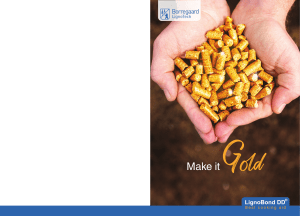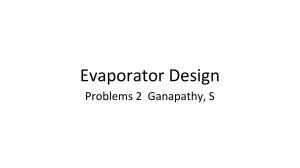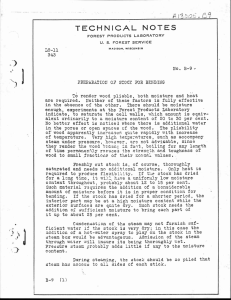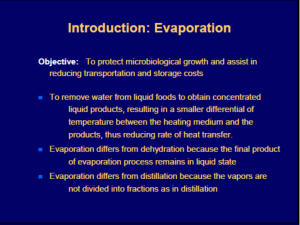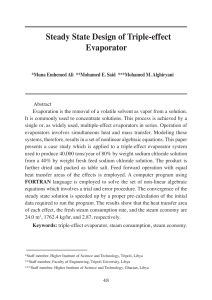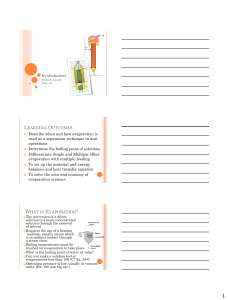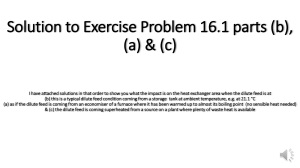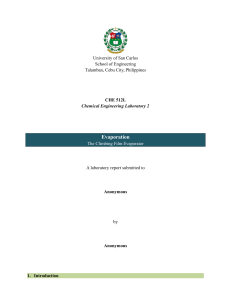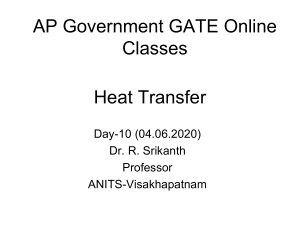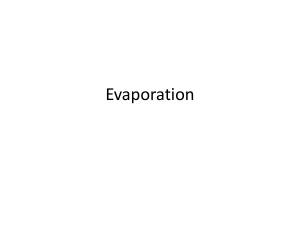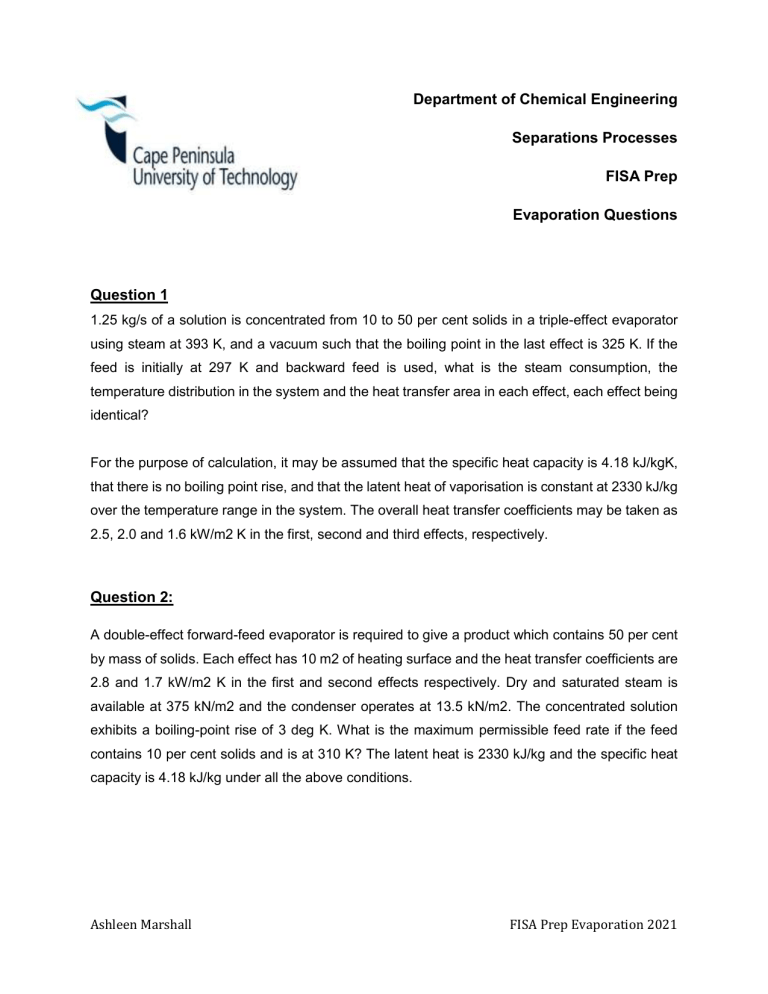
Department of Chemical Engineering Separations Processes FISA Prep Evaporation Questions Question 1 1.25 kg/s of a solution is concentrated from 10 to 50 per cent solids in a triple-effect evaporator using steam at 393 K, and a vacuum such that the boiling point in the last effect is 325 K. If the feed is initially at 297 K and backward feed is used, what is the steam consumption, the temperature distribution in the system and the heat transfer area in each effect, each effect being identical? For the purpose of calculation, it may be assumed that the specific heat capacity is 4.18 kJ/kgK, that there is no boiling point rise, and that the latent heat of vaporisation is constant at 2330 kJ/kg over the temperature range in the system. The overall heat transfer coefficients may be taken as 2.5, 2.0 and 1.6 kW/m2 K in the first, second and third effects, respectively. Question 2: A double-effect forward-feed evaporator is required to give a product which contains 50 per cent by mass of solids. Each effect has 10 m2 of heating surface and the heat transfer coefficients are 2.8 and 1.7 kW/m2 K in the first and second effects respectively. Dry and saturated steam is available at 375 kN/m2 and the condenser operates at 13.5 kN/m2. The concentrated solution exhibits a boiling-point rise of 3 deg K. What is the maximum permissible feed rate if the feed contains 10 per cent solids and is at 310 K? The latent heat is 2330 kJ/kg and the specific heat capacity is 4.18 kJ/kg under all the above conditions. Ashleen Marshall FISA Prep Evaporation 2021 Question 3 An evaporator, working at atmospheric pressure, is used to concentrate a solution from 5 per cent to 20 per cent solids at the rate of 1.25 kg/s. The solution, which has a specific heat capacity of 4.18 kJ/kg K, is fed to the evaporator at 295 K and boils at 380 K. Dry saturated steam at 240 kN/m2 is fed to the calandria, and the condensate leaves at the temperature of the condensing stream. If the heat transfer coefficient is 2.3 kW/m2 K, what is the required area of heat transfer surface and how much steam is required? The latent heat of vaporisation of the solution may be taken as being the same as that of water. Ashleen Marshall FISA Prep Evaporation 2021
